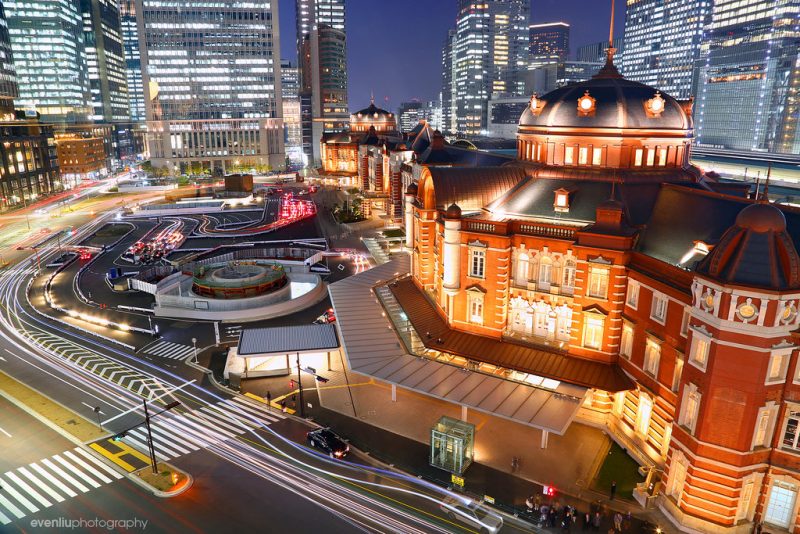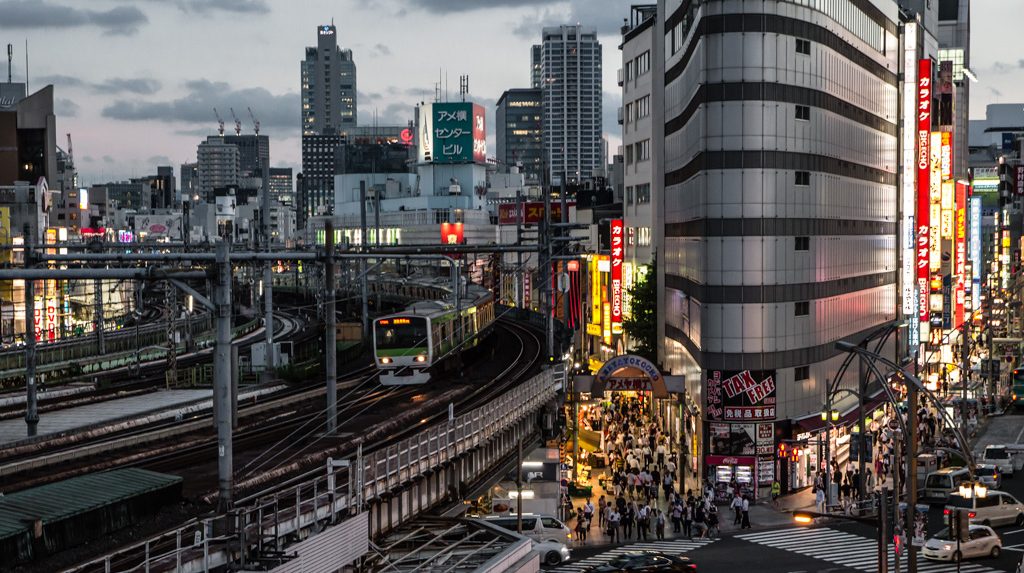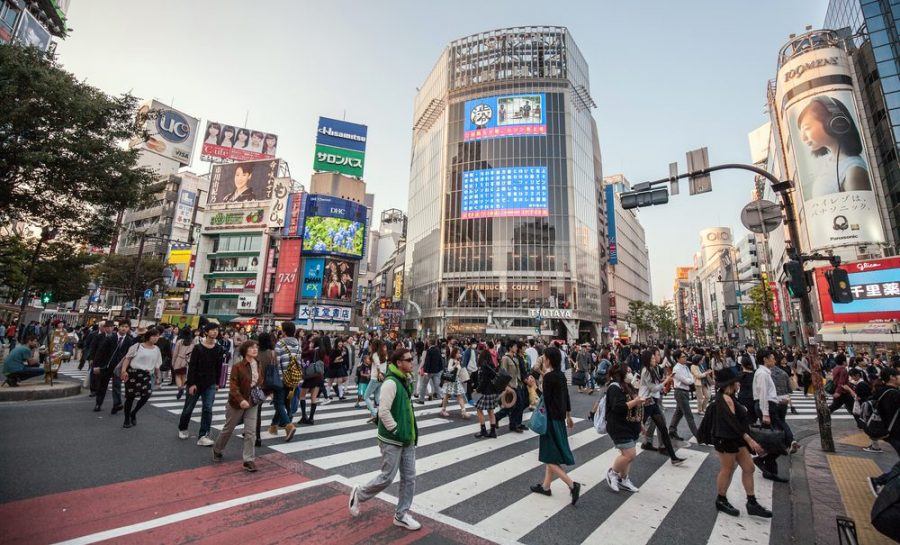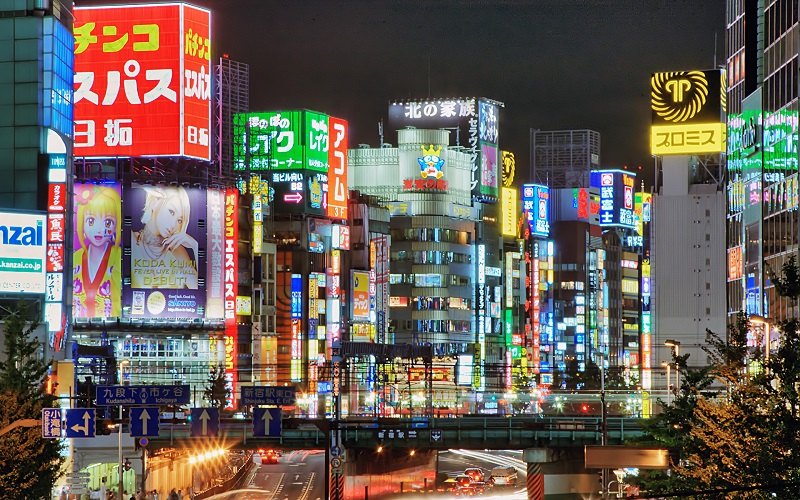Tokyo, the capital city of Japan, is the most densely populated metropolitan city in the world, home to nearly 40 million people. The Tokyo Metropolis, as the area is officially known, spans nearly 850 square miles (nearly 2,200 square kilometers). Tokyo enjoys a rich cultural history, as it has been the seat of government in Japan since the year 1603. Tokyo is comprised of twenty-three wards, each operated as an individual city.
Getting around in a city of this size – especially as an international traveler – may at first seem intimidating. However, Tokyo’s public transportation system, which includes airports, trains, buses, taxies, and pedestrian traffic – has been designed operate smoothly.
Your Japan Rail Pass covers all of the major JR train lines in Tokyo. With your Pass in hand and with the help of this travel guide, you will soon be navigating the streets and stations of Tokyo like a pro.
Table of Contents
Major Tokyo train stations
Tokyo is densely laced with railway lines, and most major lines make stops in this city. As such, Tokyo houses a large number of railway stations.
The main hubs in Tokyo include:
- Akihabara Station, located in Tokyo’s so-called “Electric City,” one of the largest stations in Tokyo, served by all three major JR lines.
- Ikebukuro Station, in the north-western side, served by the Yamanote loop line and also the Narita Express.
- Shibuya Station, connecting the Shibuya ward with the Yamanote loop line and private railways and subways.
- Shimbashi Station, which is a 10-minute walk away from Ginza district and 15 minutes away from the Tsukiji Fish Market.
- Shinagawa Station, in the southern downtown area, connecting to the Tokaido Shinkansen.
- Shinjuku Station, busiest train station in the world, connecting most JR and private lines, serving more than 3.5 million passengers daily.
- Tokyo Station, served by the Shinkansen high-speed rail lines, local JR lines, and with a number of authentic restaurants on its internal Kitchen Street.
- Ueno Station, in the northern downtown area and served by Shinkansen lines going north of Tokyo.

JR lines in Tokyo
The JR Pass affords access to five main Tokyo railway lines. You can reach Tokyo via many of Japan’s Shinkansen lines. Within the city, the Tokaido Shinkansen makes stops at Shinagawa, Ueno, and Tokyo Stations.
- The Yamanote Line is the most prominent rail line in Tokyo. The Yamanote is a 21.5 mile (34.5 kilometers) loop line which passes through Tokyo’s various city centers and numerous stations, including Tokyo, Ueno, Ikebukuro, Shinjuku, and Shibuya Stations. Riding the entire Yamanote Line takes around one hour, thus allowing you to quickly view different parts of the city.
- The Keihin-Tohoku Line runs parallel to the eastern side of the Yamanote, and can be accessed from Tokyo, Ueno, and Shinagawa Stations.
- On the western side, the Yamanote is complemented by the Saikyo Line (Osaki – Shibuya – Shinjuku – Ikebukuro – Akabane – Omiya).
- The Rapid Chuo Line intersects the Yamanote line. It can be accessed from Tokyo and Shinjuku Stations. The train runs every two and half to four minutes, and as a rapid service, stops only at Yotsuya, Ochanomizu, and Kanda during peak hours.
- The local Chuo-Sobu line also crosses the Yamanote, with a slower but very handy service for tourists. This line services both east and west Tokyo, from Chiba to Mitaka, passing through Akihabara, Yoyogi and Shinjuku Stations. Ryogoku Station can be reached from this line, providing access to the Kokugikan Sumo tournament arena.
- The Shōnan–Shinjuku line goes through a number of places around Tokyo including the Shonan area of Kanagawa Prefecture (south of Tokyo) and the Saitama, Gunma, and Tochigi Prefectures (north of Tokyo). Though it is marked on railway maps, the line has no dedicated track. It uses various sections of other lines (Ryomo, Takasaki, Utsunomiya, Yamanote, Yokosuka, and Tōkaidō Main lines).
- Other metropolitan lines that circulate on the outskirts of the city are the JR Keio line, JR Musashino line, JR Nambu line and JR Yokohama line. Don’t forget to check the complete train maps of Tokyo and its area in our Japan maps section!

Airport transfers with the JR Pass
Tokyo is home to two airports, the Narita Airport and Haneda Airport. Both airports handle international and domestic flights, making the airplane a convenient means of travel in and out of Tokyo.
- The Tokyo Monorail to Haneda Airport departs from Hamamatsucho Station, on the Yamanote line. Travel time to the terminal is 13 minutes from this station.
- The Narita Express connects to the Narita Airport via Shinjuku Station.
Your Japan Rail Pass is also valid on both airport trains.
Non-JR lines
JR East operates the most convenient train lines for moving around central Tokyo, and you can use your JR Pass on all of these metro services.
The rest of the 13 Tokyo subway lines that run in and around the Yamanote line are operated by companies other than JR East. While the metro lines do no accept the JR Pass, other IC Cards, such as the Pasmo and Suica, may be used. These cards give you access to almost any train or bus in Tokyo, and are a perfect complement to the JR Pass.
Please bear in mind that these cards do not function on intercity rail travel, so if you are planning on traveling outside of Tokyo, you will have to buy separate tickets (or use your JR Pass, which gives you a significant discount!
Other ways of getting around Tokyo
While the rail lines are the fastest, most efficient, and most reliable means of getting around Tokyo, other methods of travel are available for your convenience.
The city of Tokyo is crisscrossed by a network of city buses routes. In Tokyo, buses require a flat rate fee of ¥210 (and ¥110 for children). You can use an IC Card on most city buses.
Taxis are plentiful in Tokyo. Each taxi can handle up to four passengers, and most accept credit cards. Be sure to write down your destination for the driver. If you have access to the location name in Japanese, this is ideal, as many drivers do not speak English. Taxis, however, can be expensive compared to other public transportation when traveling long distances.
Walking and biking
As Tokyo is a large city, walking is not an ideal means of transportation. What looks like a short distance on a map – for example, from Ginza to Shibuya – may often become an hours-long walk. The exceptions are the areas around Akihabara and Ginza, which on Sundays are designated as pedestrian zones.

As an alternative to walking, you might consider renting a bicycle. If you do so, however, be aware of traffic laws and the presence of steep, hilly terrain.
Whether you choose to travel by train, bus, taxi, or on foot, you are now equipped to successfully navigate the teeming metropolis known as Tokyo!
